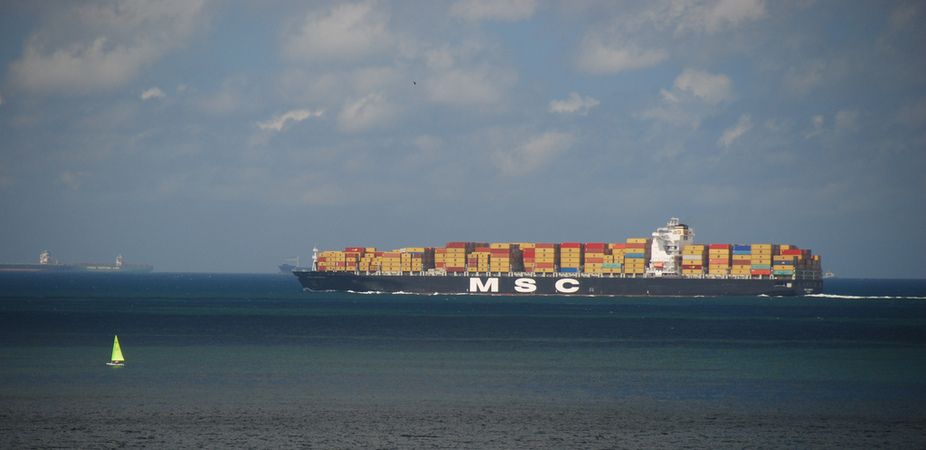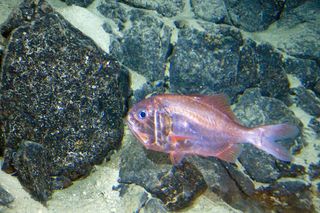
We Need a Global Conservation Agreement for the High Seas (Op-Ed)

This article was originally published at The Conversation. The publication contributed the article to Live Science's Expert Voices: Op-Ed & Insights.
The high seas cover about 50% of Earth’s surface and host a major share of the world’s biodiversity, but remain largely ungoverned. With increasing threats to open ocean ecosystems, now more than ever we need a high seas conservation agreement.
Recently the first of three meetings was held in New York to assess the scope, parameters and feasibility of an international conservation agreement for the high seas and the sustainable use of its biodiversity. States meeting at the UN will decide by September 2015 whether to have such an agreement.
So why are the high seas important for conservation?
Increasing threats
Seas within 200 nautical miles (370km) of the coast fall under state jurisdiction; all the areas outside are known as the “high seas”.
In these vast areas shipping density is increasing and technological advances are providing more opportunities to access fish stocks, particularly in the deep oceans.
GPS, multi-beam sonar and more cables and winches have enabled distant water fishing fleets to access a range of slow-growing species such as orange roughy and patagonian toothfish on the high seas and to fish these species close to extinction in some areas.
Sign up for the Live Science daily newsletter now
Get the world’s most fascinating discoveries delivered straight to your inbox.
Fishing nets and lines are now made from virtually indestructible synthetic material, which catch non-target species such as turtles, sea birds, whales and dolphins.
Heavy bottom trawling gear has already caused substantial damage to fragile ecosystems.
Outside of fishing, global shipping and cargoes are expected to triple by 2060. The risks of deliberate or accidental discharge of oil and other substance, noise and ship strikes will rise.
Beyond these existing threats, emerging uses of the high seas such as bio-prospecting for marine genetic resources, which involves the search for new compounds in the marine environment with medical and pharmaceutical benefits, deep seabed mining, and geo-engineering to mitigate climate change all have the potential to harm high seas ecosystems.
Law of the sea
Under the law of the sea states must protect the high seas marine environment and conserve and manage its living resources. States have developed some conservation and management measures through regional fisheries agreements. Under other agreements states must cooperate to conserve marine biodiversity in areas beyond national jurisdiction.
But these agreements need more implementation and enforcement.

Australia can benefit
Highly migratory species such as tuna migrate through the high seas and Australia’s exclusive economic zone (EEZ). Other fish such as whiting and redfish straddle Australia’s EEZ and the high seas. Since the establishment of EEZs around the world, high seas fishing fleets have concentrated their efforts on highly migratory species and straddling stocks in areas close to EEZ limits. This has led to over-exploitation of many of the species which spend part of their life-cycle in these areas. In one extreme example this has led to the commercial extinction of pollock from a high seas pocket in the Central Bering Sea.
Australia’s efforts to conserve and manage these stocks within its EEZ are destined to fail if fishing continues unregulated just outside its waters.
Australia has a long standing interest in conservation of species that migrate through high seas areas. The South Pacific region has one of the highest amounts biodiversity in the world, with large populations of rare and endangered whales, dolphins, sea turtles and dugong whose migratory routes straddle high seas areas and Australia’s EEZ. These species face multiple threats factors including unsustainable fisheries, ship strikes, noise and other forms of pollution.
Where to from here?
The UN has already agreed that any new conservation agreement has to complement the Law of the Sea. The challenge facing States participating in this complex endeavour is to achieve more effective and coordinated conservation and management of high seas biodiversity which complements and extends existing global efforts.
Apart from that, the agreement will look at:
- A framework for area based management and tools such as marine protected areas on the high seas. There are limited examples of high seas marine protected areas in the Antarctic Ocean and the North East Atlantic but these are only binding on member states of the relevant treaty regimes.
- A system for prior environmental impact assessment and cumulative impact assessment over time of activities on the high seas that pose threats to marine biodiversity. While there are some provisions for prior environmental impact assessment deep seabed mineral exploration, the majority of activities on the high seas are not subject to such assessments.
- The status of marine genetic resources beyond national jurisdiction, particularly aspects related to access and distribution of benefits from these resources. These resources are already being exploited with no regulatory constraints.
- The transfer of technology and capacity building between States on all of these issues.
After more than a decade of discussions in the UN, political momentum is building for negotiations on a high seas conservation agreement in 2016.
Robin Warner does not work for, consult to, own shares in or receive funding from any company or organisation that would benefit from this article, and has no relevant affiliations.
This article was originally published on The Conversation. Read the original article. Follow all of the Expert Voices issues and debates — and become part of the discussion — on Facebook, Twitter and Google +. The views expressed are those of the author and do not necessarily reflect the views of the publisher. This version of the article was originally published on Live Science.












